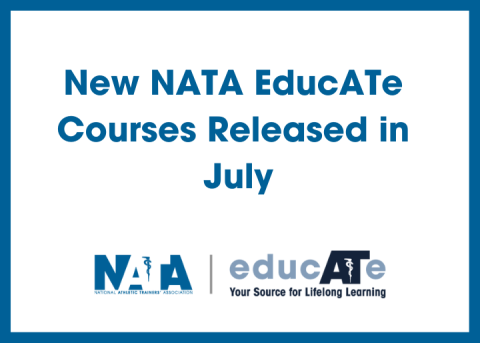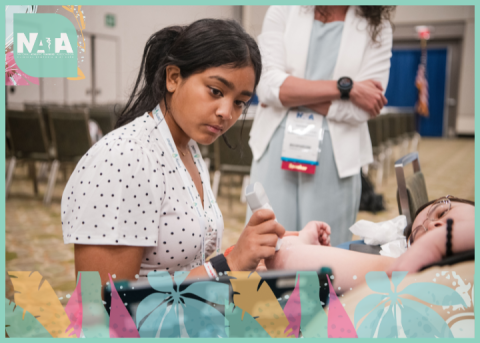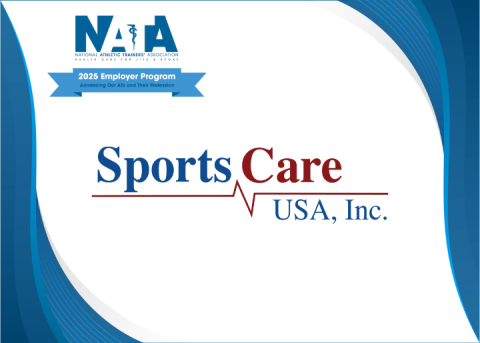
Editor’s note: The Strategic Alliance’s Athletic Training Research Agenda Task Force is highlighting clinical members who have been recognized by one of their colleagues in athletic training as a Clinical Scholar Champion for their efforts in collecting point of care research. This blog series will celebrate clinical scholars in order to illustrate how research is being used in the clinical practice.
Bart Peterson, MSS, ATC, is the athletic trainer at Palo Verde High Magnet School in Tucson, Arizona. As the most-recent former chair of the NATA Secondary School Athletic Trainers’ Committee, Peterson understands the importance of research within the clinical practice. Athletic training is a passion for Peterson as he also served as the District Seven director and secretary as well as the president of the Wyoming Athletic Trainers’ Association, District Seven chair of the NATA Research & Education Foundation Board of Directors and multiple other committee’s and task forces. Peterson is a clinical scholar champion because of his dedication to the profession and perseverance in the clinical field.
Tell us how you got started with integrating research with your clinical practice.
My first foray into real research was when I participated with the NATA Secondary School Injury Surveillance (Powell et. al) study in the late ’90s. It was exciting to be able to contribute to the profession by submitting the data from my school. It was even more exciting to see the data published and be able to compare my school’s data to the national data. I was able to make data-driven decisions based on this research. I was hooked!
What motivated you to become involved in research?
The initial motivation was the opportunity to contribute to the profession and show our value as a profession and as a setting in the secondary schools. I didn’t catch the research and writing bug in my undergrad studies, so when I started doing it in real life, it probably meant something different. Now I look at just about everything I do as a research opportunity.
How can your findings be used to guide athletic training medical practice?
Based on the evidence we were finding, nationally and at my school, I was able to make changes to my practice and to the school’s delivery of athletic health care. Not only was I reading and learning from other’s contributions, but I was participating on my own and able to use my data to improve care for my patients.
What is the No. 1 advice you would give to another clinician interested in getting involved in a research study?
You might think you don’t have time, etc., but if you are documenting appropriately using electronic medical records or other data collection system, you are already doing research. All you have to do is take your data and look at it constructively. Identify weaknesses in your data and identify trends. Then, do something about both!
There is concern that such integration of research with clinical practice may be too time consuming. What have you found helps you manage your time?
My suggestion is this: If there is something that you want to know, it’s worth the extra time. If there is general knowledge that you are trying to gain to help you make data-driven decisions, all you have to do it look at your data and compare it. It’s important to have quality data, but you don’t need publication-quality data to improve the care you provide to your patients. Soon, you will catch the research bug and dive in a bit deeper.
What does bother me is double entry of data for the sake of record keeping and research. In my opinion, your documentation and record keeping should be good enough that you can use if for research – published or not.
What are the other major barriers to collecting data at the point of care? What strategies did you employ to address these barriers?
One of the biggest barriers I find in the secondary school setting is getting administrative approval. The data we collect in secondary schools is on minors and must be treated that way. Make sure you follow best practices.
Coaches have been another barrier at times. For some reason, I have found that some coaches don’t want this kind of data on/for their teams – to the point that they try to get the school to restrict your record keeping. They have told me that they feel like I am collecting data that can be used against them down the road if someone were to get seriously hurt.
Don’t get stuck on data from one year! The population size is not large enough to make decisions accurately. We’ve all had years where it seems like if someone gets hurt, they are hurting what everyone else on the team has hurt, but those bumps flatten out over time to give you a better picture of what is really happening.





